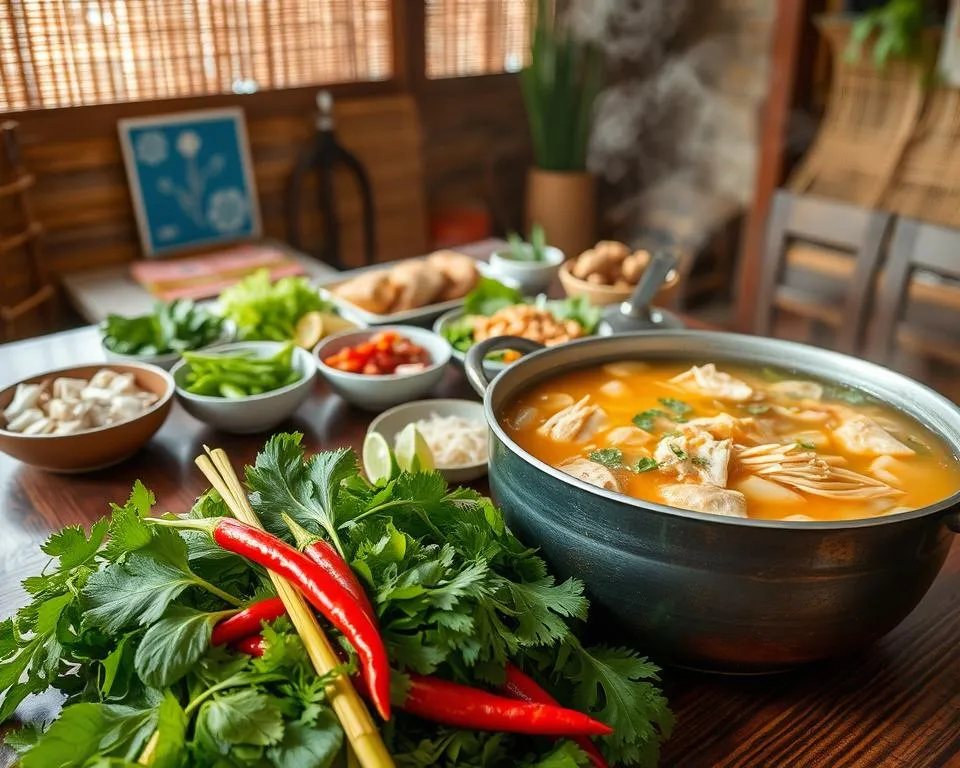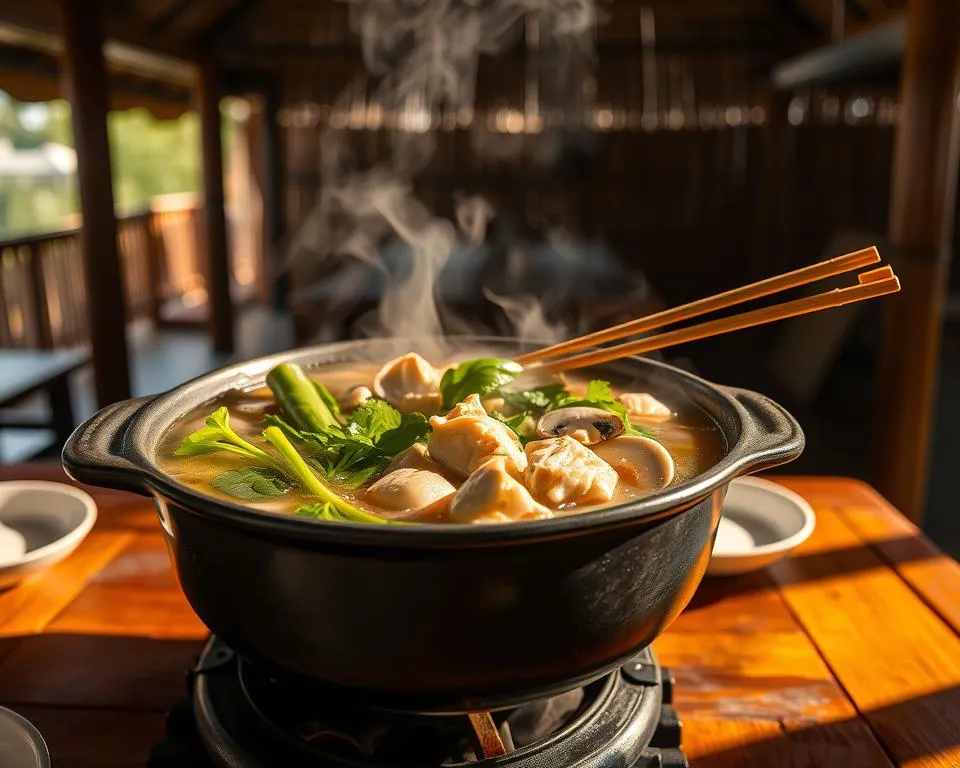Vietnamese cuisine is a vibrant symphony of flavors, colors, and traditions. Among its culinary treasures, hot pot holds a special place, symbolizing togetherness and warmth. Each region of Vietnam boasts its own unique hot pot variations, reflecting the local culture and ingredients. Join “Travel Around the World” as we explore the diverse world of Vietnamese regional hot pots, and experience the richness and variety of Vietnamese gastronomy.
From North to South, each hot pot tells a unique story, mirroring the life, customs, and tastes of the local people. The distinct ingredients, cooking methods, and flavors create a captivating culinary landscape, inviting travelers from all corners of the globe to savor and discover.
Northern Vietnam’s Crab Hot Pot: Essence of Hometown Flavors
When speaking of Northern Vietnamese hot pot, crab hot pot (Lẩu Riêu Cua Đồng) is a must-mention. This dish harmoniously blends the sweet and delicate broth simmered from bones and freshwater crabs, the subtle sourness of tomatoes, and the pungent aroma of shrimp paste.
Freshwater crabs are the star ingredient, meticulously ground and filtered to extract their flavorful essence. The crab fat is sautéed with scallions, resulting in a vibrant yellow hue and a rich, characteristic aroma. Crab hot pot is typically served with vermicelli noodles, fried tofu, fresh herbs like lettuce, perilla, and Vietnamese balm, and of course, the delectable crab meat that coagulates into enticing chunks.

Crab hot pot is not just a delicious meal; it’s a cherished childhood memory for many Northerners. Gathering around a steaming hot pot on a chilly winter day, sharing the taste of home with loved ones, evokes a sense of unparalleled warmth and comfort.
Central Highlands’ Chicken and Lá É Hot Pot: A Mountainous Fusion
Journey to the Central Highlands, and you’ll encounter the unique chicken and Lá É hot pot (Lẩu Gà Lá É), imbued with the flavors of the mountains. Lá É, a distinctive herb of this region, offers a sour, slightly spicy, and fragrant taste. Combined with free-range chicken, it creates an incredibly enticing hot pot.
The broth for this hot pot is simmered from chicken bones and local spices, then infused with Lá É. The chicken is cut into bite-sized pieces and cooked in the boiling broth. The sweetness of the chicken melds with the sourness of Lá É, complemented by the aroma of wild mushrooms and bamboo shoots, resulting in an unforgettable culinary experience.

Chicken and Lá É hot pot transcends mere sustenance; it embodies the culture of the Central Highlands. Often served during festivals and family gatherings, it reflects the strong community bonds and hospitality of the local people.
Southern Vietnam’s Fish Sauce Hot Pot: A Symphony of Mekong Delta Flavors
The Mekong Delta is renowned for its rich and flavorful hot pots, and fish sauce hot pot (Lẩu Mắm) reigns supreme. This dish artfully combines various fermented fish sauces, local specialties like snakehead fish sauce, anchovy sauce, and goby fish sauce, with fresh seafood such as shrimp, squid, sea bass, eel, and wild vegetables.
The broth is crafted from these fermented fish sauces, meticulously seasoned to perfection. Seafood and wild vegetables are then cooked in the simmering broth. The salty and intense flavor of the fish sauce harmonizes with the sweetness of the seafood and vegetables, creating a truly unique and captivating hot pot.

Fish sauce hot pot is more than just a delicious meal; it evokes cherished memories for many Southerners. On rainy days, gathering around a steaming hot pot, sharing the taste of the Mekong Delta with family, is an experience beyond compare.
Secrets to Cooking Authentic Regional Hot Pots
Crafting a perfect hot pot requires selecting fresh ingredients and mastering the proper cooking techniques. Here are some tips to help you create flavorful and authentic regional hot pots:
- Choose fresh, high-quality ingredients: Freshness is paramount to a delicious hot pot. Select high-quality meats, seafood, and vegetables from reputable sources.
- Simmer the broth properly: The broth is the soul of the hot pot. Simmer it for several hours using beef, chicken, or pork bones to achieve a rich and flavorful base.
- Season to taste: Seasoning enhances the appeal of the hot pot. Adjust the flavors to your preference while preserving the dish’s authentic character.
- Enjoy it hot: Hot pot is best enjoyed piping hot. Prepare an array of vegetables, noodles, and dipping sauces for a complete experience.
Conclusion
Vietnamese regional hot pots are not merely delicious dishes; they are unique cultural expressions, reflecting the life and people of each region. Take the time to explore and savor these hot pots to fully appreciate the richness and diversity of Vietnamese cuisine. Each pot tells a story, a culinary journey through the flavors of Vietnam, filled with delightful discoveries and meaningful experiences.